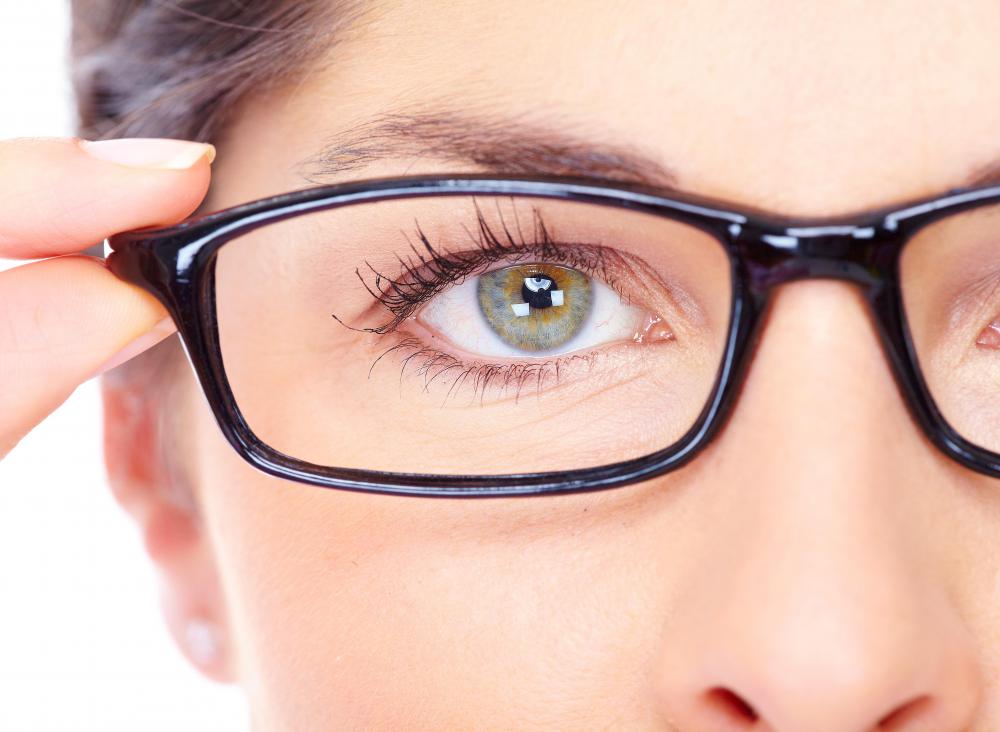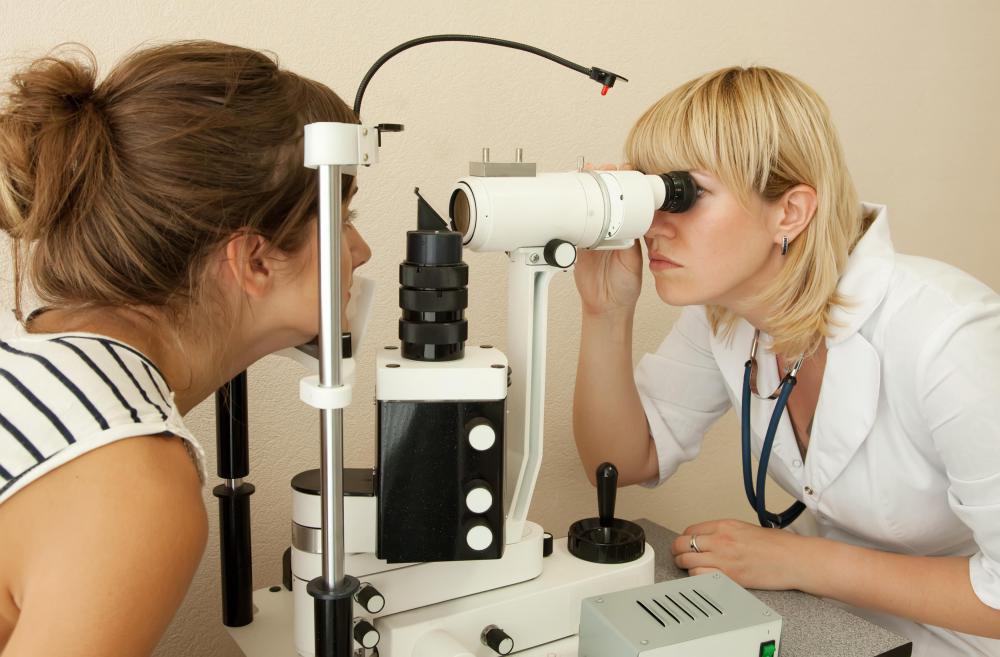At WiseGEEK, we're committed to delivering accurate, trustworthy information. Our expert-authored content is rigorously fact-checked and sourced from credible authorities. Discover how we uphold the highest standards in providing you with reliable knowledge.
What Is the Accommodation Reflex?
The accommodation reflex is a vision reflex that enables people to quickly transfer their focus between near and distant objects. It allows the eye to respond to an out of focus image, such as the distortion caused by a change in focal length, very quickly. Patients with a slowed accommodation reflex may have a variety of vision disorders. An evaluation by an ophthalmologist can determine what is happening inside the patient’s eye, and whether there are any treatments available.
Three separate phenomena make up the reflex: convergence, changes to lens shape, and pupil constriction. Together, they allow the eye to adapt when it shifts between near and distant targets. A person reading a book, for example, might glance across a library upon hearing a noise. The eyes could quickly adjust to show the reader that it was someone entering the side door. There are clear evolutionary advantages to the ability to quickly switch visual targets, for tasks like tracking predators or identifying prey.

Convergence involves the redirection of both eyes so they converge on the same target. While looking at an object in the distance, the field of vision needs to be narrower, to focus the target on the central part of the eye, known as the fovea. For closer objects, the field of vision is broader to allow people to see the entire object, like a computer screen. Thus, the eyes change position to adjust in response to changes in viewing distance.

The lens shape also needs to change to sharpen the image and make it crisp. In the accommodation reflex, the ciliary muscle contracts to pull the lens into a new position. The blurry image should become clear as the lens adjusts. Finally, the pupil constricts with distance vision to limit light leaks at the edge of the eye, and widens for close-up focus tasks. These three separate components of the accommodation reflex provide a mechanism for the eyes to adjust rapidly and effectively.

People can develop eye strain if they have vision deficits that remain uncorrected. Their eyes cannot accommodate to changes because no matter how much the shape of the lens changes, objects will still not come into focus. Prolonged distance or close-up work can also contribute to eye strain and delayed accommodation reflex. Sometimes eye exercises can help resolve this. Corrective lenses can also help, by reducing strain caused by being unable to bring objects into focus.
AS FEATURED ON:
AS FEATURED ON:














Discussion Comments
I stare at a computer screen all day, and this strains my eyes. After about a year of doing this, I noticed that my eyes were having trouble adjusting when I looked from the screen to something far away. This made everything sort of blurry.
In addition to that, it made me really dizzy. I felt like I was losing my balance, because my reaction was delayed. I had to go to the eye doctor.
He gave me some corrective lenses to wear. They have made all the difference. I really needed some sort of vision aid because of the nature of my work, and I think that going to him may have saved my eyesight.
The accommodation reflex is one of those things that you never think about until you read about it. It is so natural and involuntary for our eyes to adjust to distance that we aren't aware of the changes going on in our eyes that allow it.
It's like breathing. I am rarely aware that I am inhaling and exhaling, yet I do it all the time.
I have never had any vision problems, but I'm sure if something were affecting my accommodation reflex, I would suddenly become very aware of it. In the same way, if I were having trouble breathing, I would notice the process a lot more.
Post your comments